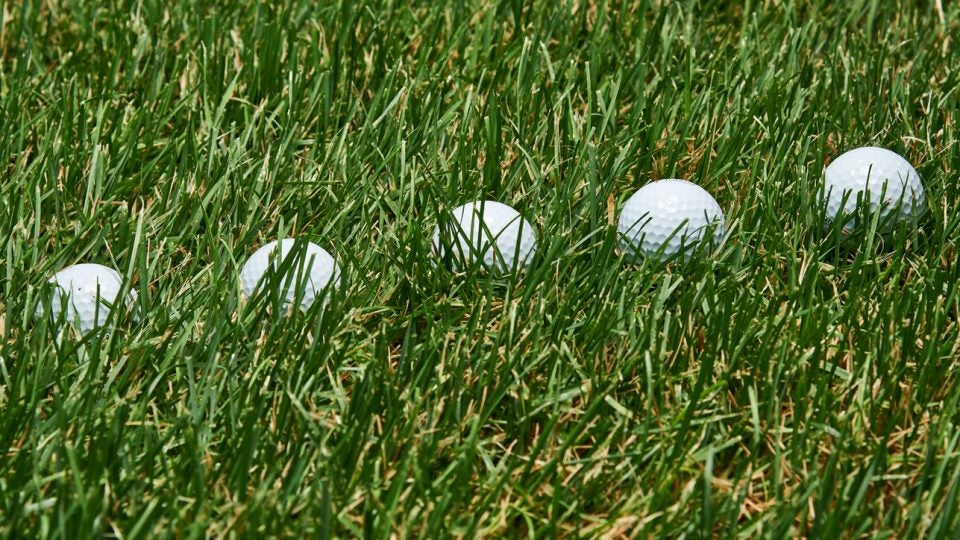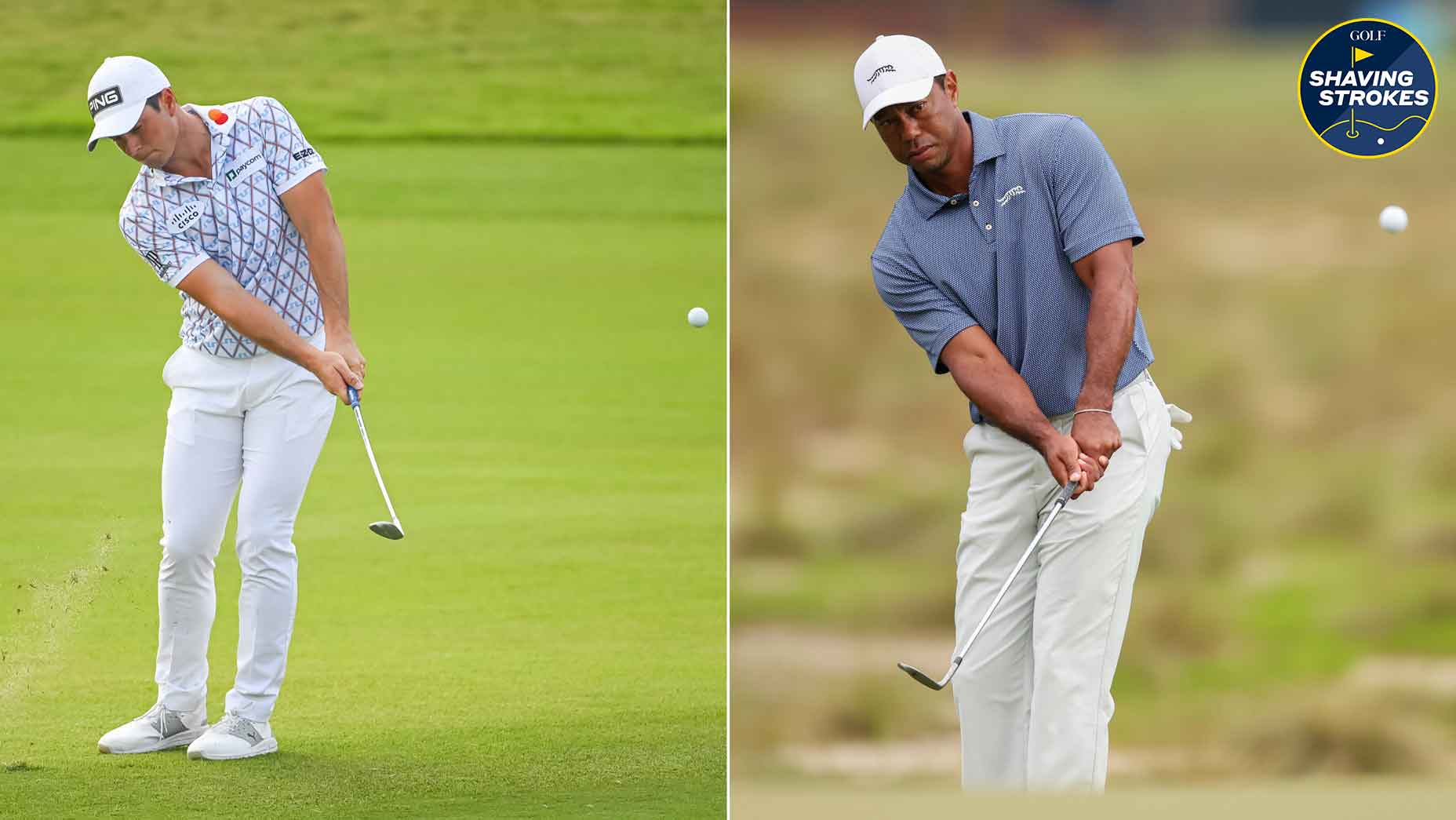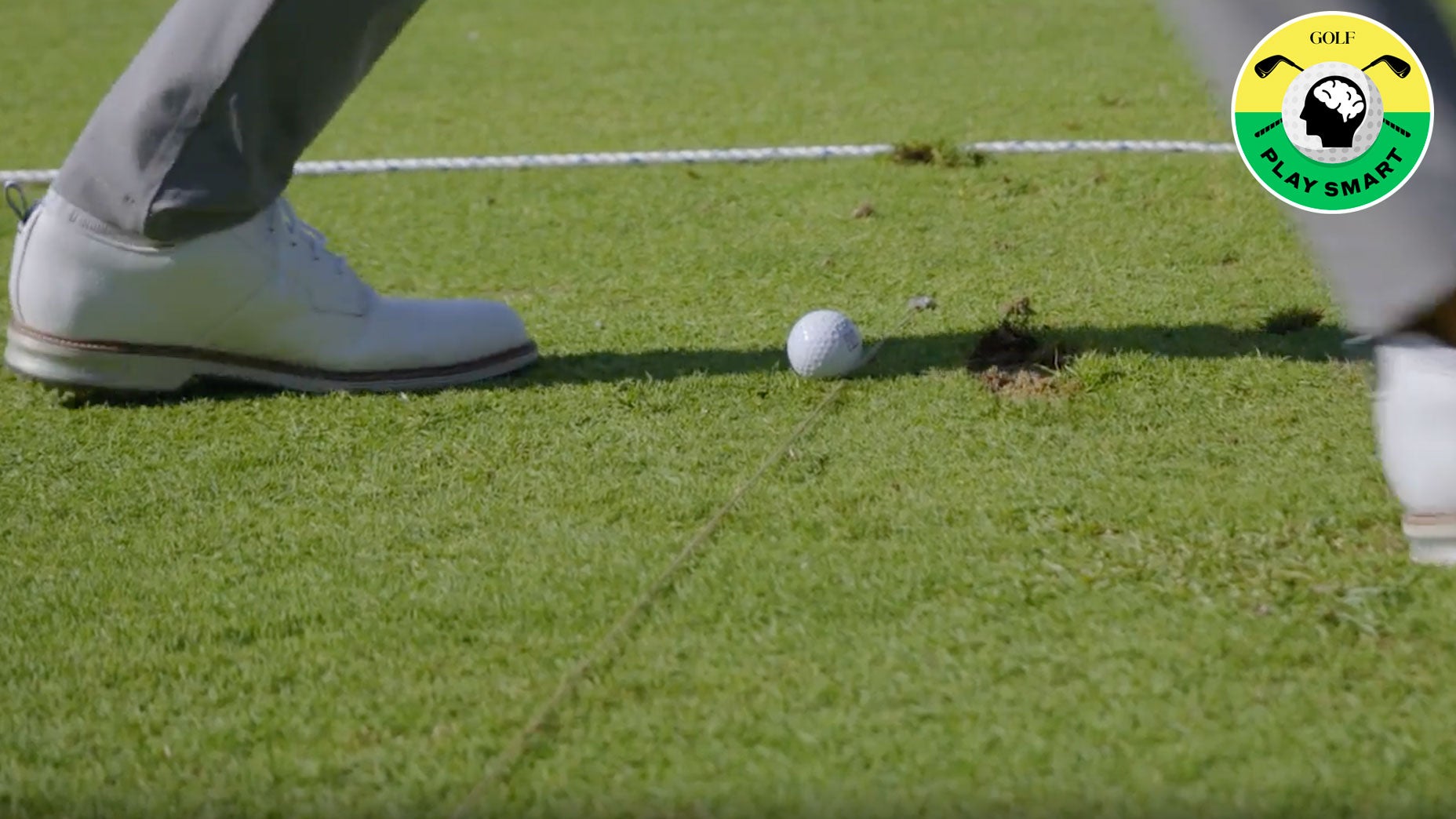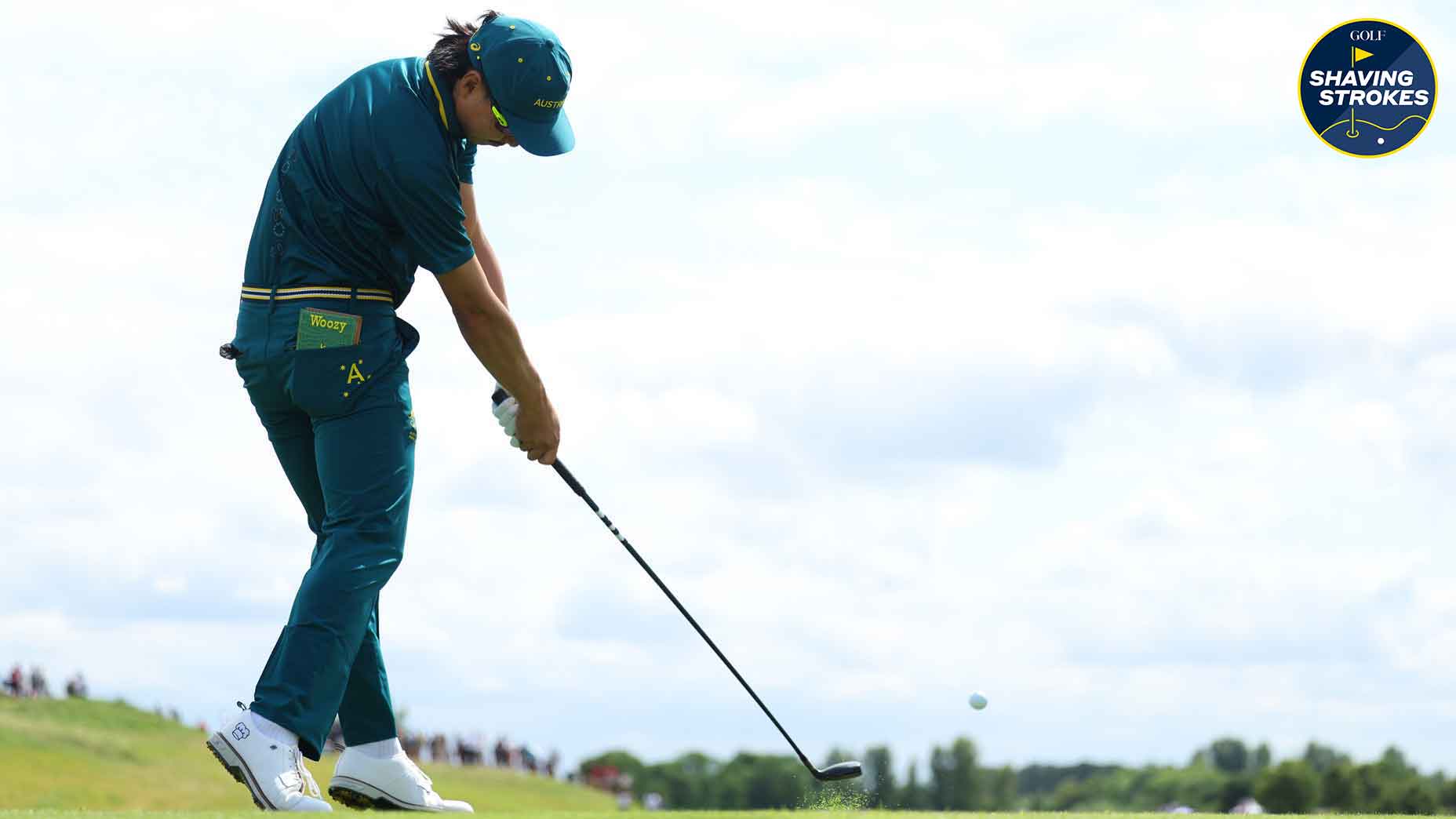Even for the world’s best players, hitting shots into the rough costs, on average, about a quarter-stroke. Imagine how much more it’s costing you. I’ll tell you: a lot. That’s because most weekend players attempt impossible swings from the deep stuff—shots that simply have no chance of success given how the ball is buried in the grass. That ends now. On the following pages I’ll teach you how to accurately assess your lie and execute the most plausible option. It starts by asking yourself three questions, the answers to which ultimately tell you if you can go for the green or not, the type of swing you’ll need to successfully launch the ball from its lie, and the correct club to pull based on your final target. Here’s how it works.
1. HOW DEEPLY IS THE BALL SITTING IN THE ROUGH?
The answer here provides clues to the type of attack angle you’ll need to successfully advance the ball. As a general rule, the higher the ball sits on the grass, the more you’ll need a shallower angle of attack, or you just may swing right underneath it. A ball that sits deeper in the cabbage, or closer to the ground, requires a steeper angle of attack, so you can go down and get it.
Changing attack angles is easy. For the times you need to shallow out your swing (ball sitting up), play the ball forward of center and set your weight neutral. For a steeper descent, play the ball back (almost off your right foot for a really poor lie) and set your weight left, well ahead of the ball. Regardless of how you set up, make the center of your swing the center of your weight distribution. If your weight is left, stay left.

2. WHAT’S THE RESISTANCE FACTOR?
With this question, you’re judging how much grass is going to get between the clubface and the back of the ball at impact. The more you deem the resistance will interfere, the more you’ll need to deviate from your original plan. The first priority is predictable contact, and that means taking enough loft to get the ball out of its grassy lie. If you decide that the resistance is heavy, plan to club down—don’t risk anything longer than a 7-iron. (Go all the way down to a wedge if the lie is really thick.) Also, consider shifting your focus from hitting the green to simply getting back in play. Smart golf keeps big numbers off your card. If only a smidgen of grass is likely to wedge its way between the clubface and the ball at impact, give yourself the green light to swing the club you deem necessary to hit the green or your next target.
MAJOR: Too much grass to work with. Punch the ball out with your wedge and move on.
MODERATE: Adjust your plan to deal with slightly reduced carry and slightly more rollout.
MILD: All systems go. Minimal grass means you should be able to get plenty of clubface on it.

3. WHICH WAY IS THE GRASS GROWING?
The final part of the shot/club selection process when your ball finds the rough will allow you to dial in the correct club for the shot, whether you’re going for the green or simply playing to safety. Carefully inspect the direction the blades are growing. If the grass is growing against you (that is, in the opposite direction of your line of flight) you can expect significantly less yardage out of whatever club you pull—at least 10 percent. However, if the grass is growing in the direction of your final target, then you have what we call a flyer—the blade direction will actually increase yardage, regardless of club. If this is the case, drop at least one club from what you think you’ll need to reach the green or your safety spot.








